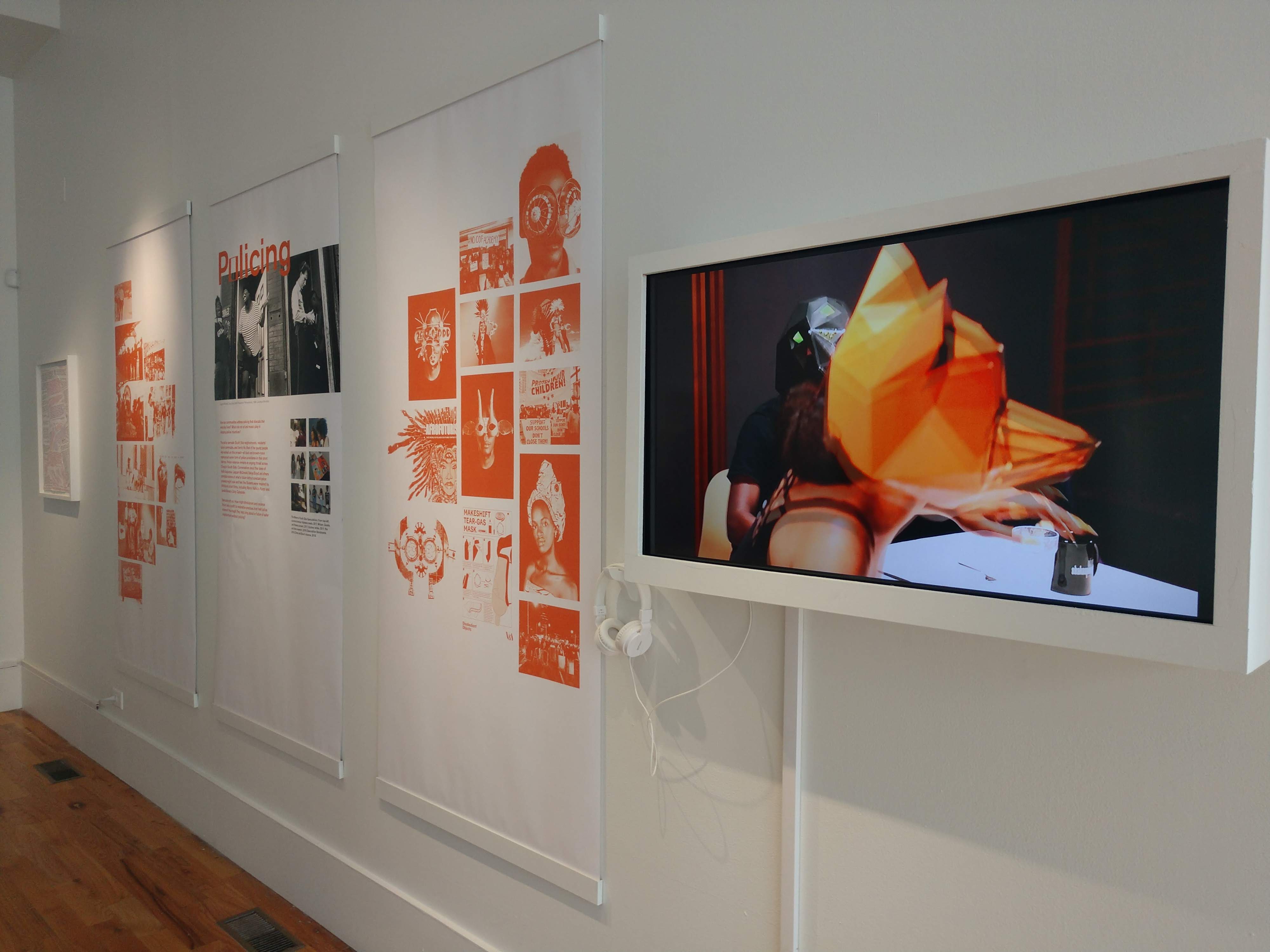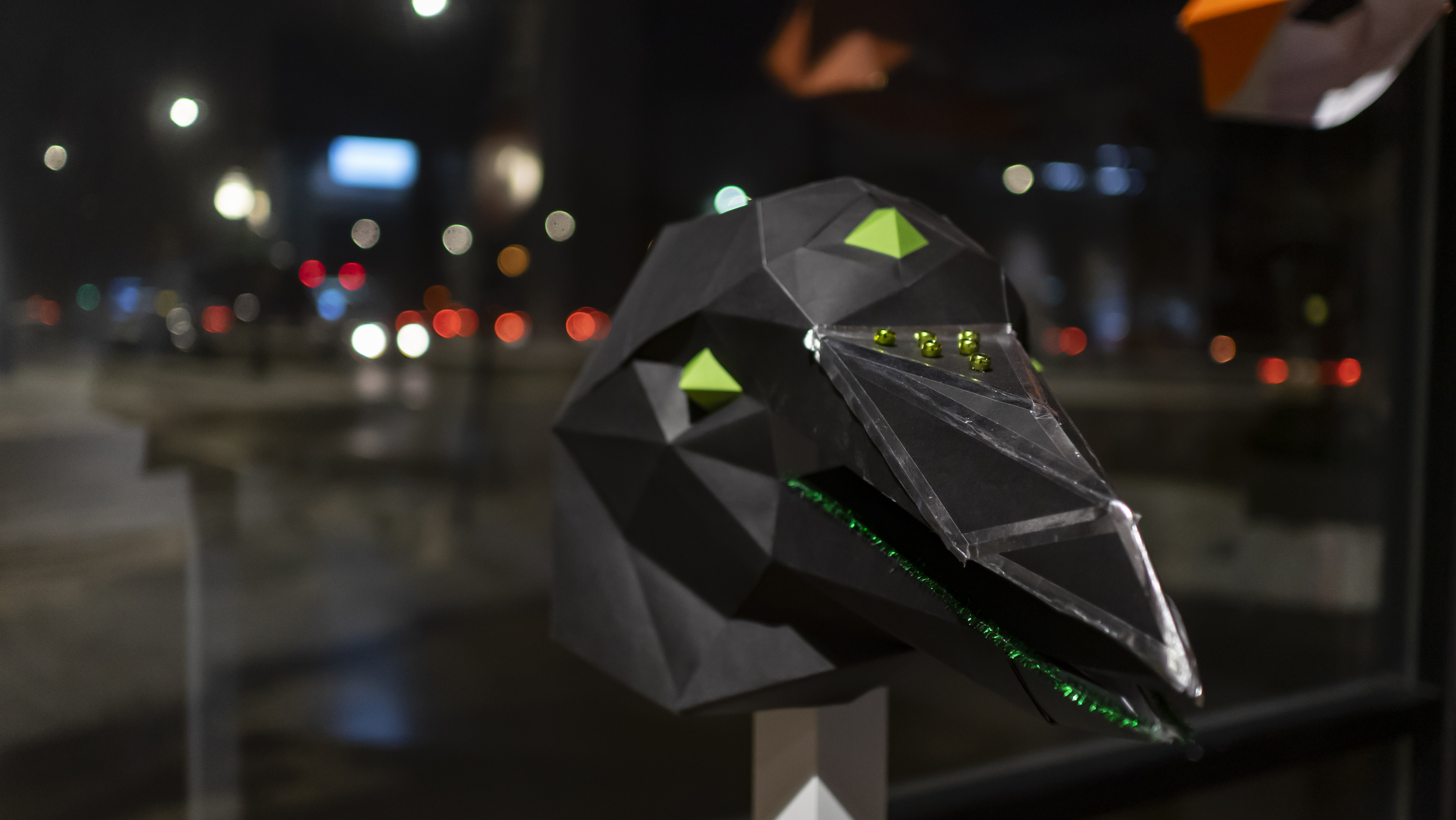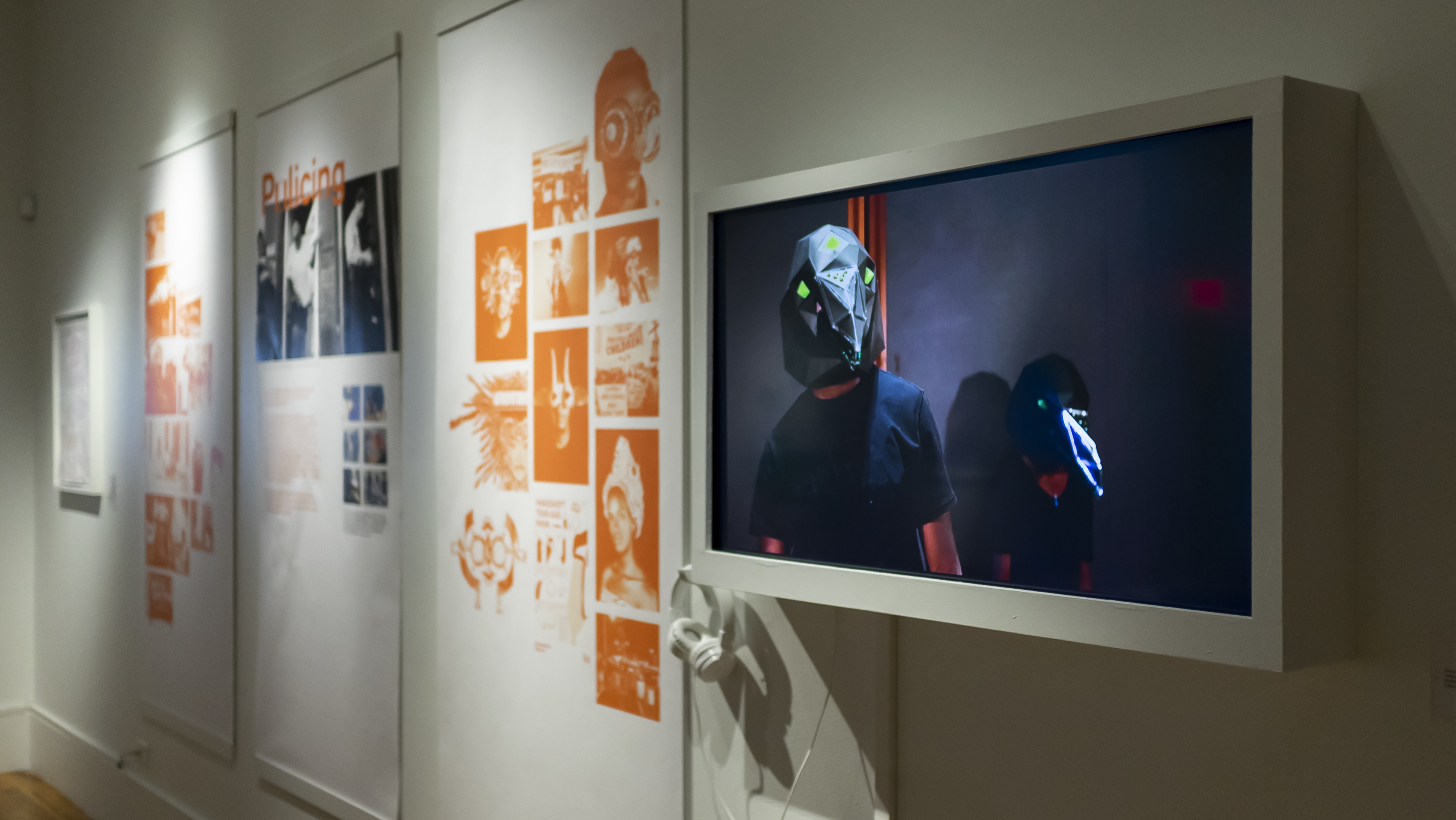
How can communities address policing and the way it disrupts their everyday lives? What are alternatives to policing?
The Chicago police have
historically South Side neighborhoods, residents’
school commutes, family life. Police violence
remains an ongoing threat across Chicago’s South Side and contemporary activists have drawn attention to how much money
the city spends on policing. Long before the summer
of 2020, the young people working on this project named what happened to
Harith Augustus, Laquan McDonald, Rakiya Boyd
at the hands of police, and prompted visions of what
a future without constant police presence might look and feel like. Here the
young people imagine what it means to protect themselves and their communities.
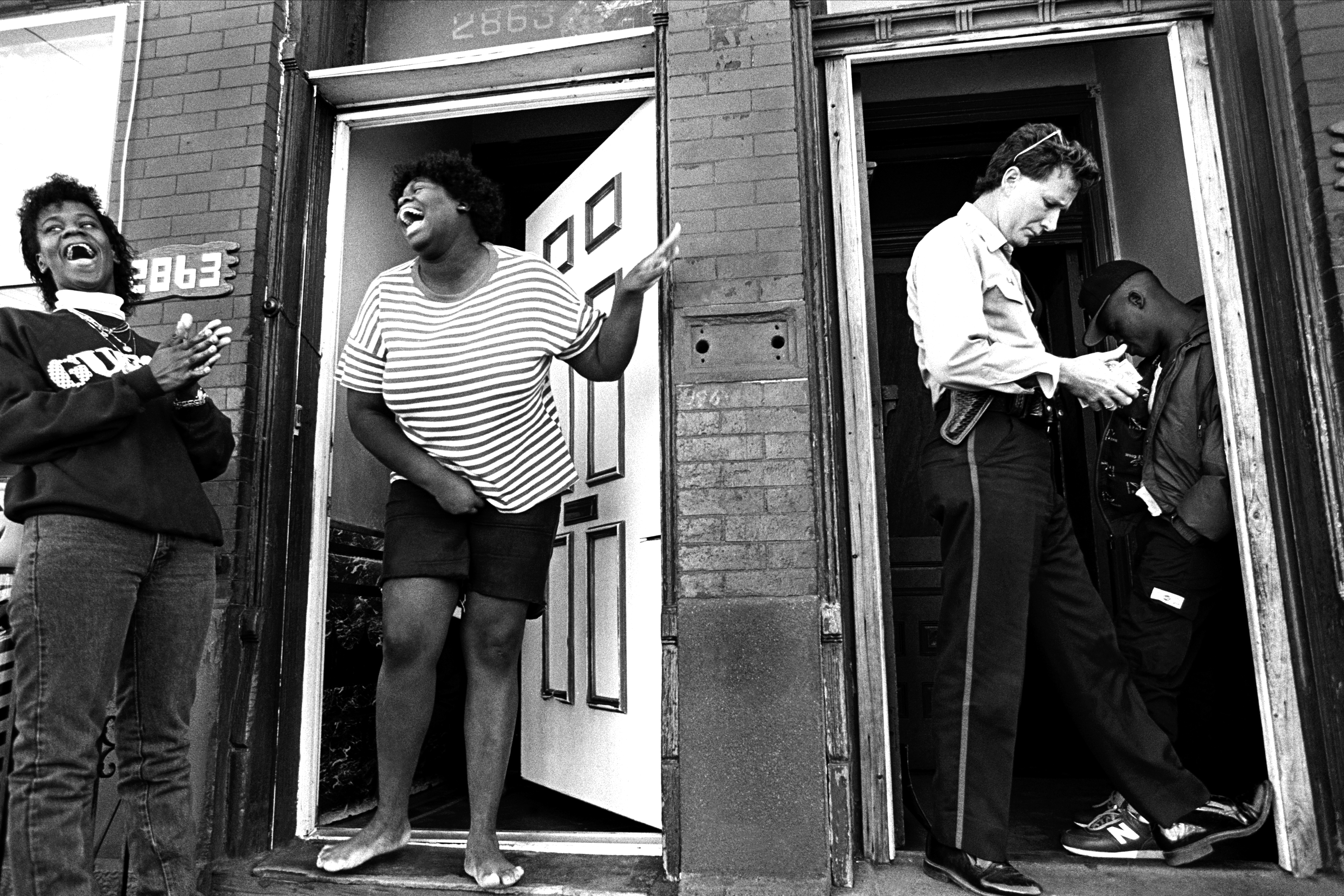
Eugene Richards, Drug bust, North Philadelphia, Pennsylvania, 1989.
Courtesy of the artist

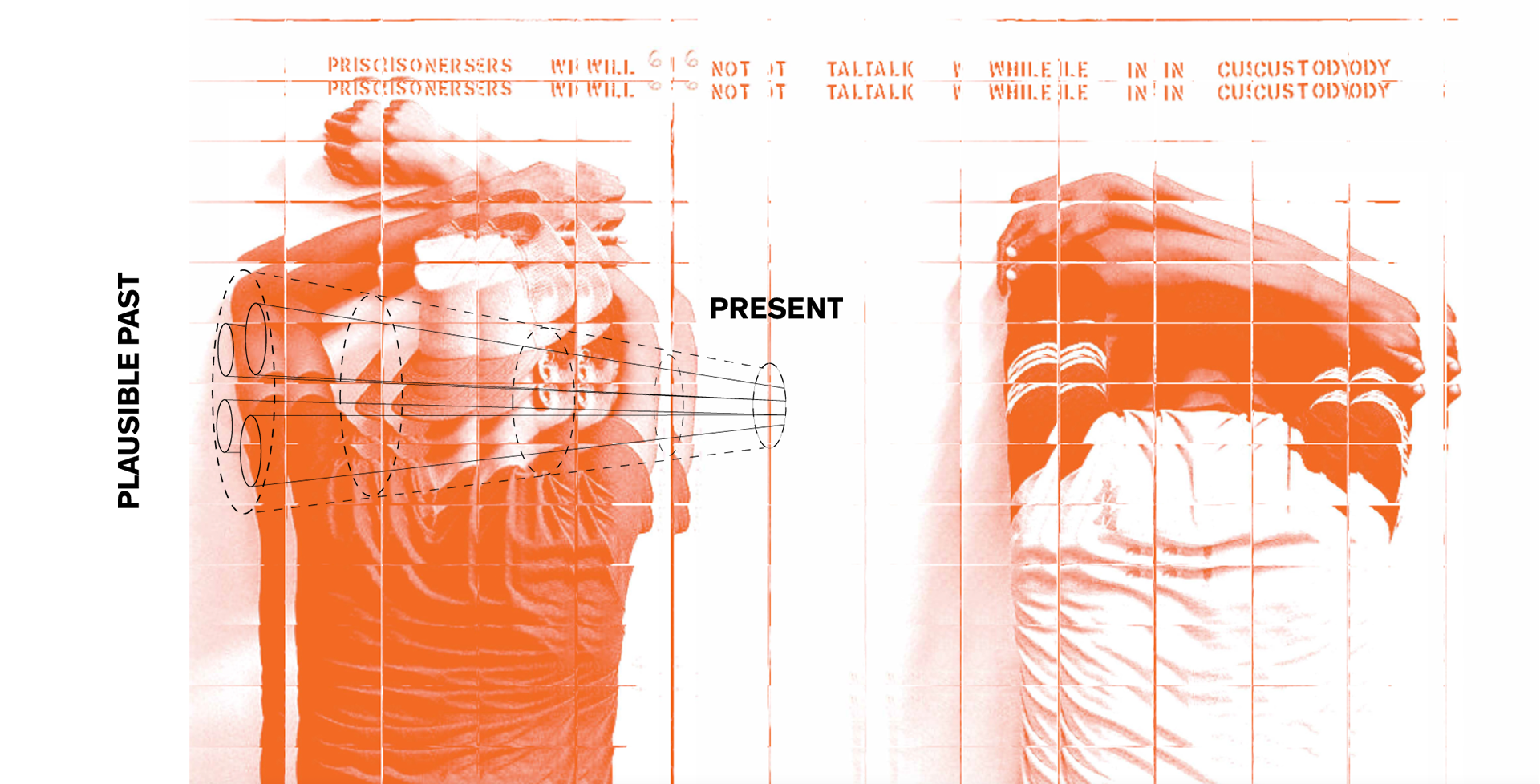
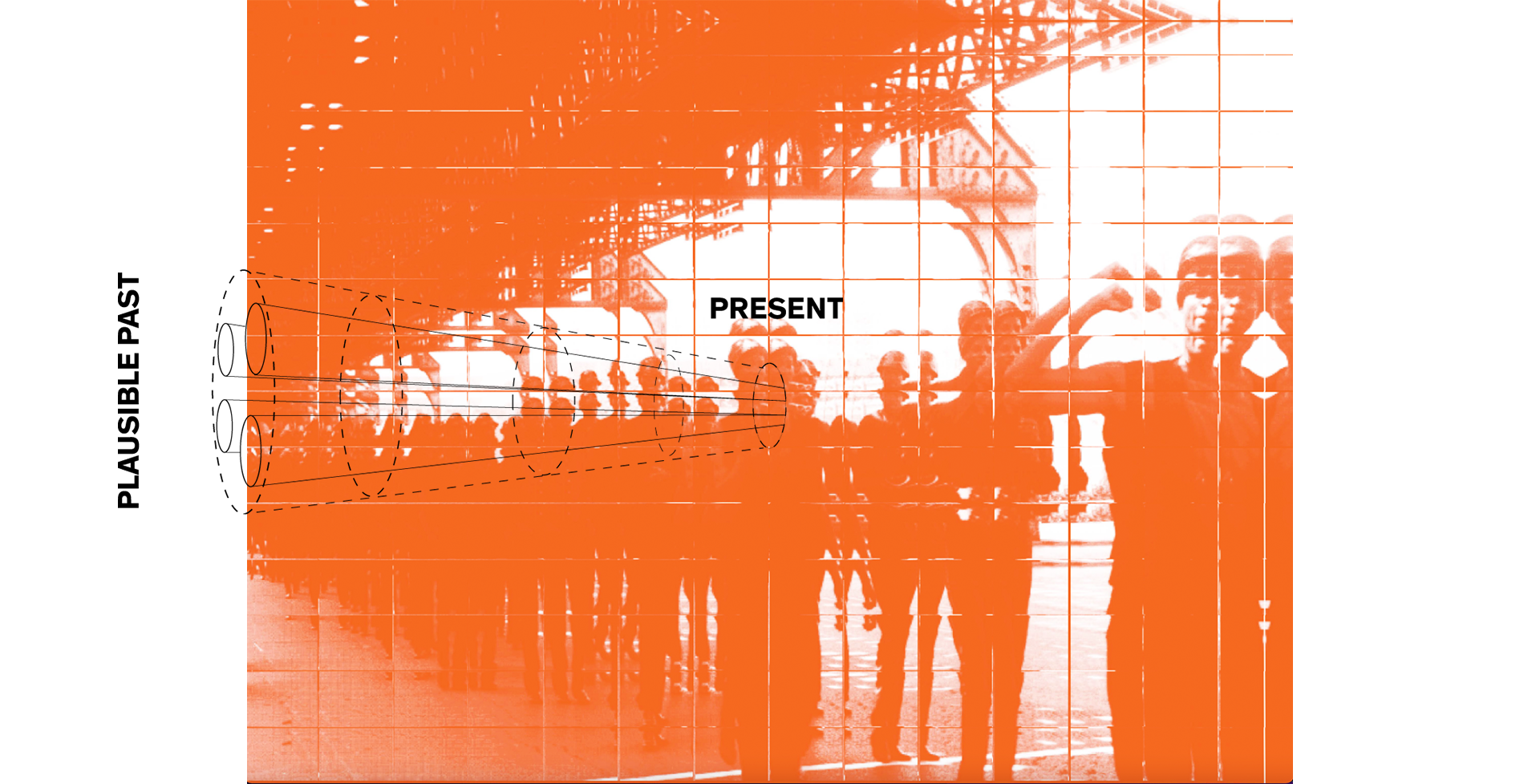
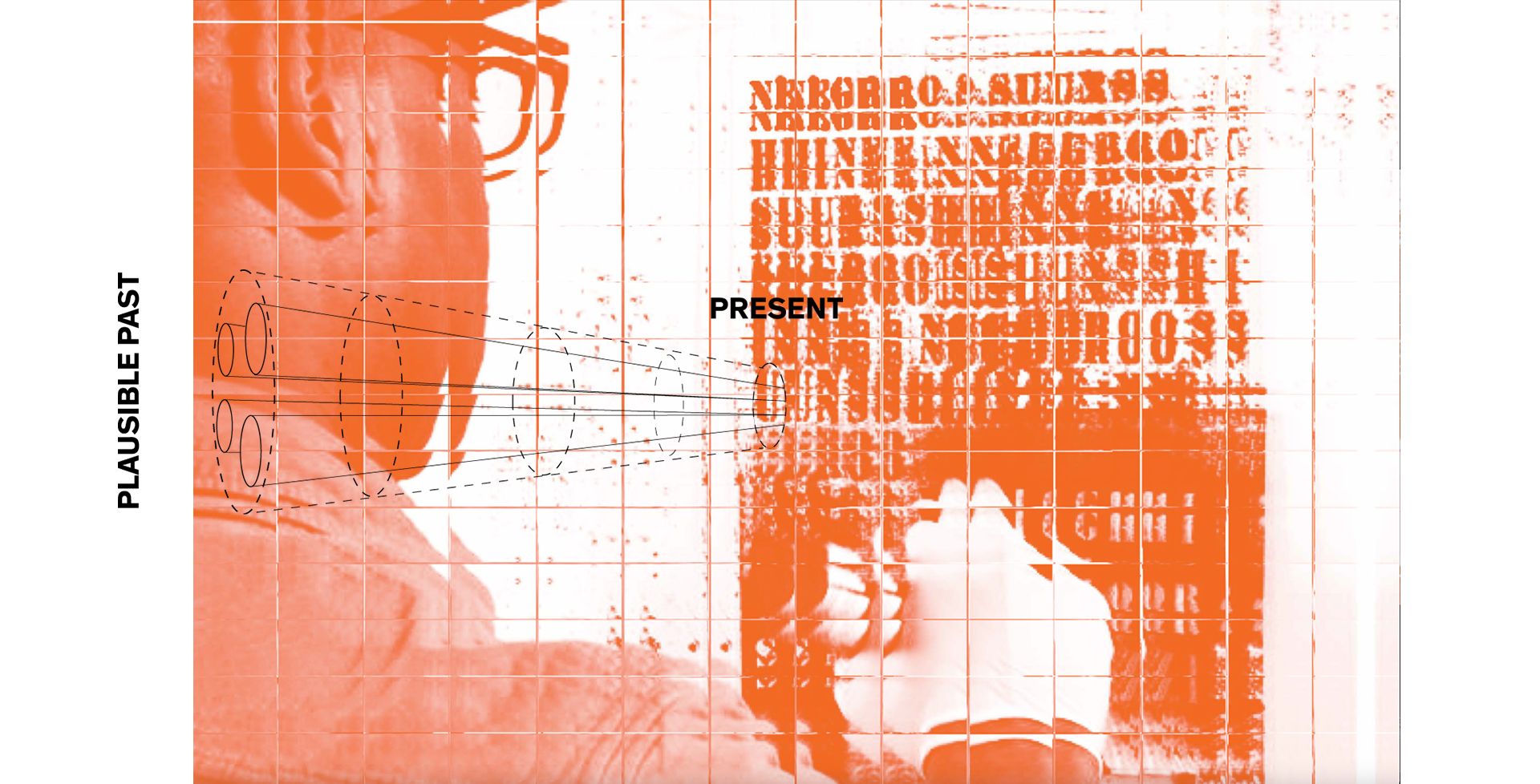


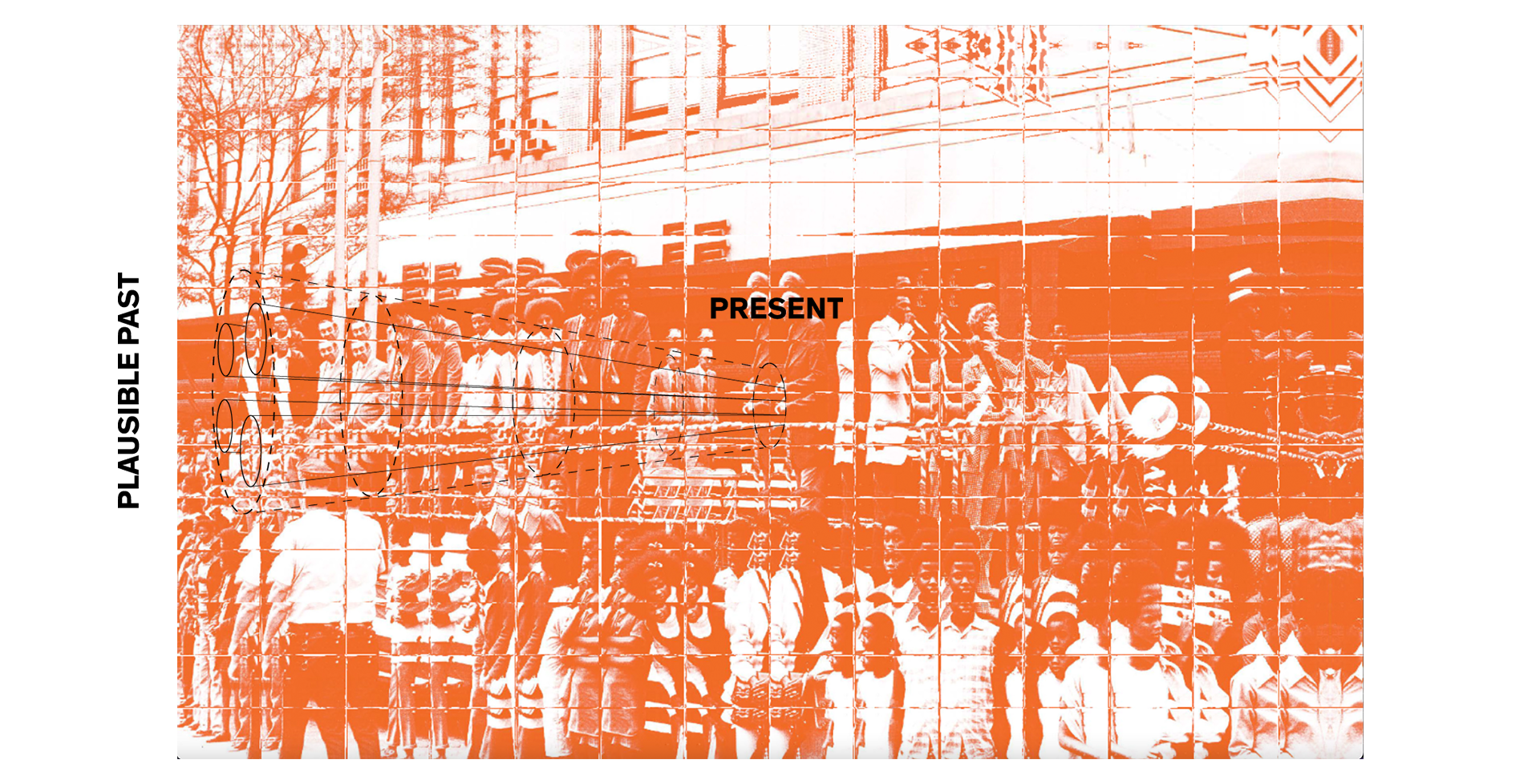
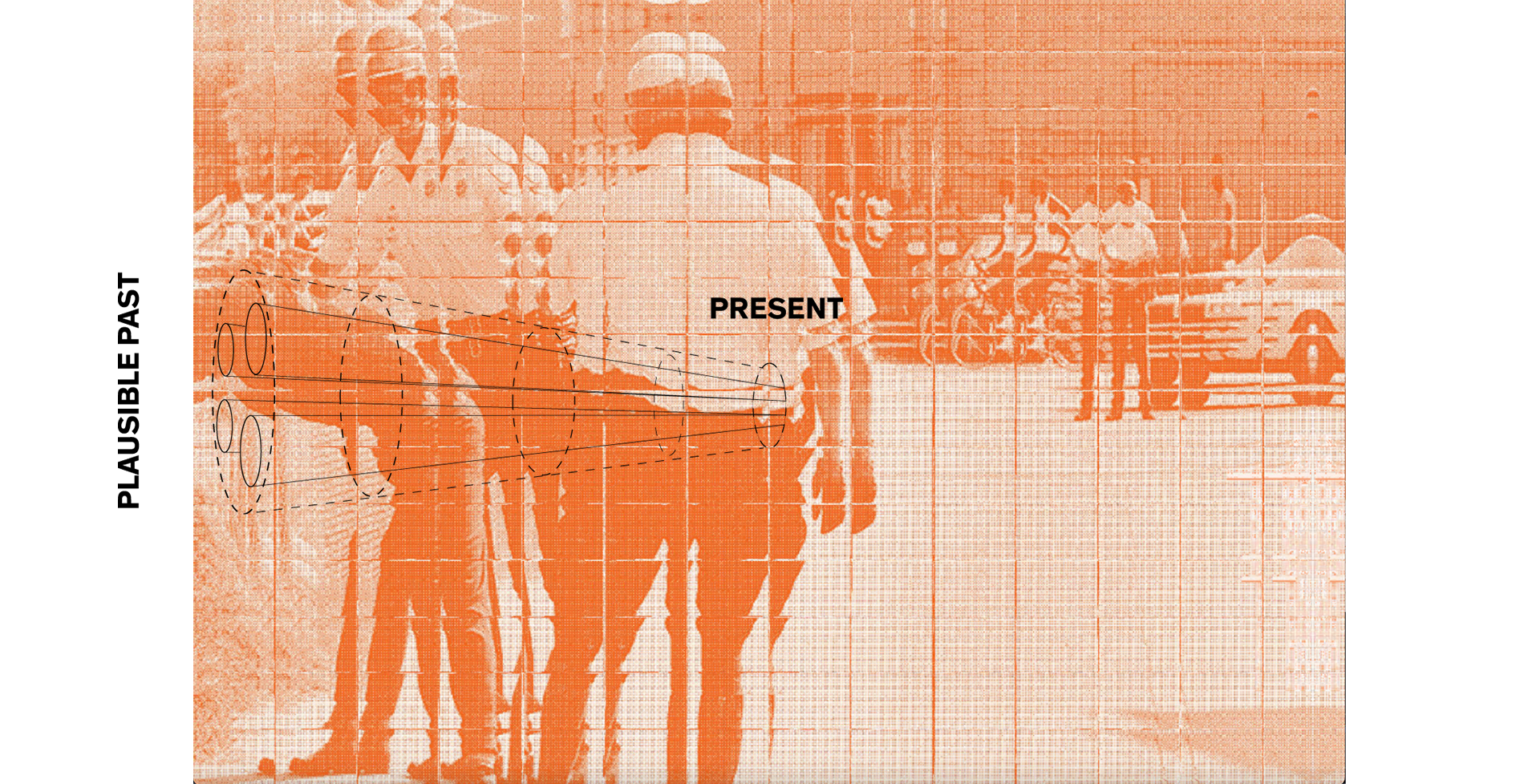
1980s Drug war and AIDS
crisis.
Text Collage, 2017
Youth Artists: Khalena Williams, Miriam Lagundoye, Sydney Lee, Myleena Webb, and Giselle Rodriguez
This text-based collage features Matt Green of Englewood, a 1983 high school graduate trying to get into the local community college, Kennedy King. Living at the height of the War on Drugs and the explosion of AIDS and mass incarceration, Matt struggles to hold his family together. Matt’s sister, Maddie, is slowly turning to the streets and fighting frequently, while his mother is addicted to crack and not doing anything to benefit her or her family. Matt and Maddie’s father has been shot by the police, wrongfully prosecuted and is in custody. Matt’s job is selling drugs to take care of his family. One day, while making a sale, Matt comes upon Maddie in the midst of a fight. Just as Matt stops to break it up, the police arrive and accuse him of causing the fight. The police search Matt, and find his last bag of cocaine, as a result Matt is given a lengthy prison sentence.








Cloning Masks and Protective Masks, Chicago, 2038
Speculative objects,
2018
Cloning Masks and Protective Masks are prototypes of masks that families and communities can use to protect children from police violence. Watch the mockumentary the artists made to accompany it.



